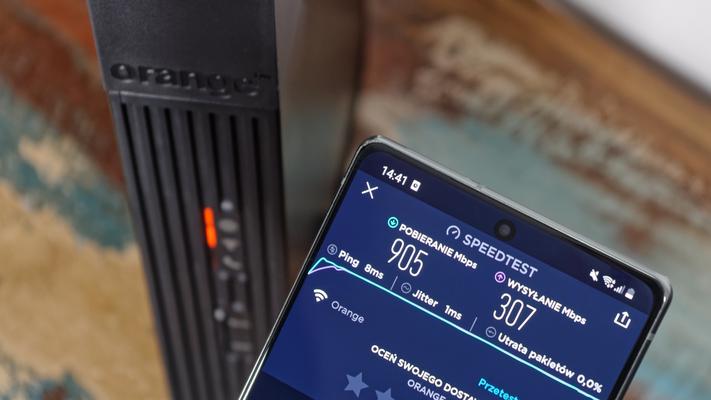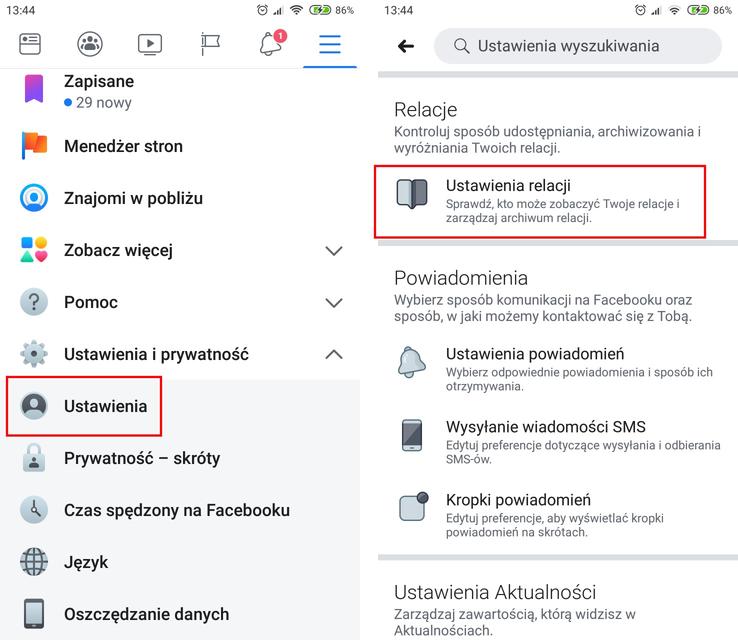When we talk about new products in telecommunications, the first comes to mind the gradual introduction of 5G by Polish operators.However, changes are also introduced closer to us, which will have a more direct impact on using the Internet at home.It's about Wi-Fi 6-new in our laptops, telephones and routers.
It is difficult to escape the information that the telecommunications operator introduces 3G, 4G, LTE, 5G and so on.They are everywhere, there are a lot of talk about them, and yet this is not the only field of radio communication that is evolving.Wi-fi also, but it is said much less.Well.Maybe the changes are less spectacular on a national scale, but they touch us more directly.
802.11abgn AC ZOMGBB - what's going on?
When you buy a phone, you choose a laptop or other device working on the web, certainly these markings have felt in the specification.This is nothing more than subsequent standards of Wi-Fi networks, just like 3G, 4G and 5G are cellular standards, and USB 2.0, 3.0, 3.1 and subsequent ones mean the following generations of the connection with a USB cable.
IEEE 802.11 is a subgroup of standards, describing the physical layer of local wireless networks-that is, the Wi-Fi network, to which your phone, laptop, printer, smartżars and so on.The physical layer is all that is responsible for sending bits.In this case, we are talking about electromagnetic equipment and waves that cod and carry these bits.This standard also describes the Mac (media access control), controlling access to the medium (i.e. waves).
Ciekawostka: pierwsza wersja standardu była opracowana nie dla fal elektromagnetycznych, ale dla podczerwieni. Pozwalała na przesyłanie danych z zawrotną prędkością 1 lub 2 Mb/s. Nie wytrzymała jednak konkurencji ze strony standardu IrDA, używanego dziś m.in. przez piloty.There are plenty of versions marked with the letters of the 802.11 standards, but we will focus on those that are directly used for Wi-Fi data transmission.It started ... from b. 802.11b it would be Wi-Fi 1 if this name convention was introduced in 1999.However, this is the naming of recent years introduced for marketing purposes to make it easier for users to distinguish between standards.
In the table below I gave the theoretical maximum transmission speed that a given standard can provide.It really depends on the mass of external factors, access point design and customer capabilities.There is no chance for such speeds at home.Transfers that we can expect at home by doing a speed test can be between 10 and 50% of theoretical value (depending on the Wi-Fi standard).
| Generacja | Standard | Prędkość maks. | Szerokość kanałów | Maks. liczba anten | Częstotliwości | Rok publikacji |
|---|---|---|---|---|---|---|
| - | 802.11b | 11 Mb/s | 20 MHz | 2,4 GHz | 1999 | |
| - | 802.11a | 54 Mb/s | 20 MHz | 5 GHz | 1999 | |
| - | 802.11g | 54 Mb/s | 20 MHz | 1 × 1 SISO | 2,4 i 5 GHz | 2003 |
| Wi-Fi 4 | 802.11n | 600 Mb/s | 20 i 40 MHz | 4 × 4 MIMO | 2,4 i 5 GHz | 2009 |
| Wi-Fi 5 | 802.11ac | 6,93 Gb/s | 20, 40, 80, 80+80 i 160 MHz | 8 × 8 MU-MIMO*1 | 5 GHz | 2013 |
| Wi-Fi 6 | 802.11ax | 9,6 Gb/s | 20 i 40 MHz (2,4 GHz)80, 80+80, 160 MHz (5 GHz) | 8 x 8 MU-MIMO | 2,4, 5 i 6 GHz*2 | 2019 |
*1 W 2013 roku wprowadzono wersję Wave1 z SU-MIMO i 8 strumieniami, w 2016 wersję Wave2 z MU-MIMO i transmisją do 8 klientów na raz*2 Częstotliwości z zakresu 6 GHz są obsługiwane w rozszerzeniu tego standardu – Wi-Fi 6E

The order of the letters, of course, does not mean that someone in a serious standardization organization decided that they would troll the buyers of routers.There are more of these standards than letters in the alphabet.Each of them is responsible for different functions in data transmission, e.g. the way the router and other access points pass on the user's device when it moves under the house (802.11k).
Wi-Fi 6 is a revolution that I feel at home
When I made the first laptop, I also dreamed of a Wi-Fi card.At that time it wasn't a problem - I checked if my Dell had the right socket, I started it, put the card in place, connected the antennas.I remember it for a reason.It was around 2005 and I got a bit about finding the card 802.11a/b/g.I necessarily wanted to feel the speed of data transfer speed without a cable.Today I feel the same thrill, following the development of equipment from Wi-Fi 6 (802.11ax).
Why do I care about it?Because Wi-Fi 6 allows you to better use the speed of its link.In TELEPOLIS.PL, I have repeatedly mentioned that I have fiber optic connection up to 1 Gb/s.To fully use them, I had to connect the computer with a cable to Funbox 3. Until the Wi-Fi router came to the house.
And what?You can have gigabit without cables.I will say more - this result was not registered on the router, which I would have to buy for a few hundred zlotys.This is the performance of Funbox 6, or "Router from the Operator", designed by Orange.The router has been available in the Orange offer since February 2021.
It's about maintaining the speed when there are more and more devices
I know I'm in a minority when it comes to access to optical fiber.Given the average link speed in the Polish household, it may seem that we will not need high Wi-Fi 6 speeds for a long time.Are you sure?
Different reports talk about different growth rates, but both American and European say that in this decade a 4-person household will have 50 Wi-Fi devices.There is something about it.In 2019, 3 devices from Wi-Fi came to me, in 2020 one, in 2021 one more and probably not the end.Grain to the grain and we will not look at how routers from Wi-Fi 5 will stop kneading.Problems with the transfer, which today is experienced by devices that support the 2.4 GHz band, will begin to touch and those working on the 5 GHz band.
And here Wi-Fi 6 comes with help. This standard has been designed specifically for the Internet of Things and the growing number of users using the internet after Wi-Fi at the same time.
BeamForming, MU-MIMO, 1024-QAM and other terms regarding Wi-Fi 6 that are worth knowing
By reading the specification of devices from Wi-Fi 6, you will definitely find the terms that inform about the various technical solutions used here that are behind the promises of this standard.It is worth getting to know them closer:
Hooks that are worth knowing about
At the beginning the most important: although the Wi-Fi 6 standard provides us with theoretically higher transfers than Wi-Fi 5, it is not said that each Wi-Fi 6 router will be faster than Wi-Fi 5.
When choosing a router, check the supported number of streams and channel width.For Wi-Fi 5, search for VHT160, for Wi-Fi 6-He160.
Since theoretical values, take into account where the parameters given by the manufacturer come from.For example, whether the manufacturer gives the sum of streams available in all served frequency bands, or only in 5 GHz, in which it has the most.The 4 × 4 router can mean both 4 streams in the 5 GHz + 3 band in the 2.4 GHz and 2 + 2 band.
Similarly at theoretical speed - check whether it was given separately for the frequencies of 2.4 and 5 GHz, or whether theoretical speeds for both bands were added.
In particular, pay attention whether the Wi-Fi 6 standard has been implemented on both bands, or, for example, only 5 GHz, on 2.4 GHz leaving the Wi-Fi 4 (802.11n) standard.Also remember that the speed you see on a speedtest also depends on the parameters supported by the device connected to the modem:
When sending larger amounts of data, whether after Wi-Fi or wired, remember that the total connection speed will be divided between connected devices.
Wi-Fi 6 is still not over.There are already devices that support the extension of this standard, i.e. Wi-Fi 6E.The basic difference is the ability to work in the next frequency range - 6 GHz.
The article was created in cooperation with Orange Polska.
Chcesz być na bieżąco? Obserwuj nas naGoogle NewsSource of photos: Wł.
Source of text: Wł.
Tagi:orangewi-fiwi-fi 6orange funbox 6Wyświetl komentarze X Przewiń w dół do następnego wpisu

